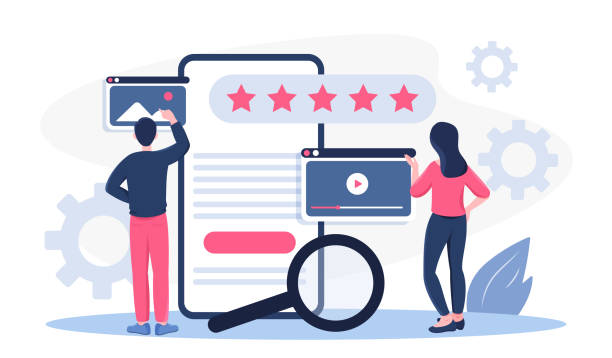An Introduction to the Importance of Custom Website Design in the Digital Age
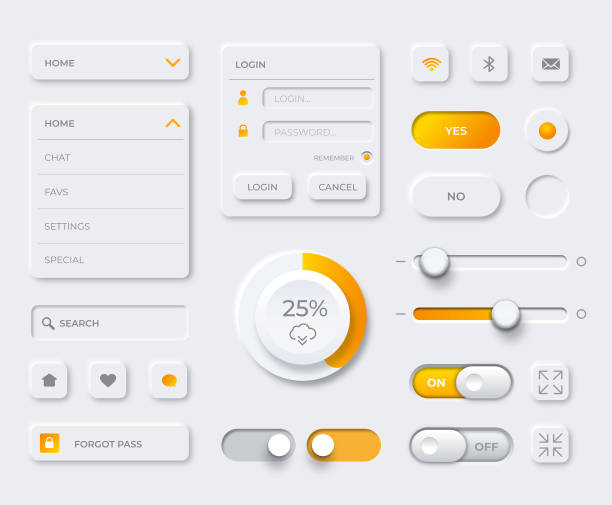
In today’s rapidly #digitally_transforming world, having a professional and efficient #website is not just an advantage but an undeniable necessity for every business and even individuals.
But can every website meet your unique needs? The answer to this question highlights the importance of custom website design.
Ready-made websites or generic templates, while initially seeming cost-effective, often have significant limitations in terms of #customization, #security, and #scalability.
A custom website design allows you to build every part of your website exactly according to your brand’s needs, goals, and visual identity.
This approach not only provides a better User Experience (UX) for your visitors but also performs better in terms of SEO, as the website structure is designed from the outset for #search_engine_optimization.
Focusing on specific business needs means creating a digital platform that aligns with every one of your strategic goals, from increasing sales to providing unique services and enhancing brand awareness.
This form of web development allows businesses to showcase their digital identity in a distinctive and professional way that stands out among competitors.
When you design a custom website, you have complete control over your website’s code, functionality, and features.
This unparalleled flexibility allows you to add specific features not available in ready-made templates, or even integrate your internal business processes with the website.
For example, a fully customized online booking system, a personalized customer portal, or a proprietary analytical tool that collects specific data for you.
All of these optimize the user experience to a higher level and help your business not only retain existing customers but also attract new ones.
Therefore, investing in custom website design is an investment in the future and sustainability of your business in today’s competitive landscape.
This approach builds a powerful digital asset for you that has the capability to grow and evolve with your business.
Is your current e-commerce website not generating the expected sales for you?
Rasaweb specializes in professional e-commerce website design!
✅ An attractive and user-friendly website aimed at increasing sales
✅ High speed and security for an ideal shopping experience⚡ Get a free online store design consultation with Rasaweb!
Why Custom Website Design is a Superior Choice Over Ready-made Templates?

Choosing between a ready-made template and custom website design is one of the most important decisions business owners face when entering the digital world.
While ready-made templates can be a quick and inexpensive solution for launching a website, they also have significant limitations that can hinder business growth and development in the long run.
One of the main differences lies in the level of flexibility and customization.
Ready-made templates, as their name suggests, are pre-designed, and major changes to their structure, appearance, or functionality are difficult or even impossible.
This limitation can harm your brand’s visual identity, as your website might look similar to thousands of other websites using the same template.
In contrast, a custom website is built from scratch based on your unique needs.
Every pixel, every line of code, and every feature is designed and developed with your business strategies and goals in mind.
This approach allows you to provide a completely unique and optimized user experience for your audience.
Furthermore, custom website design offers significant advantages in terms of performance and security.
Ready-made templates often include extra code and unnecessary plugins that can slow down website loading speeds and make them vulnerable to security risks.
Conversely, in a custom website, the coding is more optimized and cleaner, leading to higher speed and better security.
Website loading speed not only affects user experience but is also an important factor in SEO ranking.
Slower websites typically rank lower in search results.
Also, scalability is another key point.
As your business grows, your website’s needs also change.
A custom website design can easily adapt to these changes and add new functionalities without needing major overhauls or complete reconstruction.
In contrast, ready-made templates might resist future developments, forcing you to reinvest in a new platform.
Therefore, although the initial cost of unique website development seems higher, its long-term benefits, including better performance, higher security, unparalleled flexibility, and growth potential, make it a smart investment.
Key Stages in the Process of Designing and Building a Custom Website
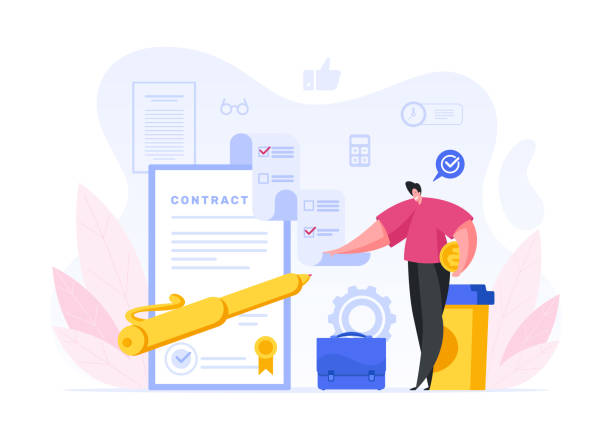
The custom website design process is a multi-stage and precise journey that requires planning, collaboration, and professional execution.
Understanding these stages is essential for any business looking to invest in a powerful digital platform.
The first stage, which can be called the “Discovery and Planning” phase, involves gathering detailed information about business goals, target audience, competitors, and specific project requirements.
In this stage, the design team holds meetings with the client to define the overall project vision and expected functionalities.
This includes roadmap definition, budgeting, and approximate timeline.
This explanatory phase is vital for ensuring alignment of expectations and goals.
After that, the “UX/UI Design” stage begins.
In this stage, designers work on creating a smooth User Experience (UX) and an attractive and intuitive User Interface (UI).
This includes designing wireframes, mockups, and prototypes that demonstrate how users will interact with the website and its overall appearance.
The goal of this stage is to ensure the ease of use and visual appeal of the website for the end-users.
The next stage is “Development and Coding,” where designers and developers translate visual designs into executable code.
This includes developing the front-end (what users see) and back-end (the logic and database behind the scenes) parts of the website.
Using the latest technologies and best coding practices in this stage is crucial to ensure optimal performance and security of the website.
This stage is highly specialized and requires high skill.
After coding is complete, the website enters the “Testing and Optimization” stage.
In this phase, the website is thoroughly tested for performance, security, compatibility with different browsers and mobile devices, and adherence to initial requirements.
Any bugs or errors identified are resolved in this stage.
This stage of custom website development is very important to ensure the final product’s quality.
Finally, the “Launch and Deployment” stage arrives.
After final approval by the client and resolution of all issues, the website is deployed on final servers and made publicly available.
However, the work does not end here; the “Support and Maintenance” stage after launch is of high importance to ensure the website’s stable performance and implement necessary updates.
These stages proceed linearly, but continuous collaboration between the team and the client throughout the project is vital for achieving the best results.
| Feature | Custom Website Design | Ready-made Templates |
|---|---|---|
| Customization Capability | High (Full) | Low (Limited) |
| Performance and Speed | Optimized and Fast | Medium to Slow (Extra Code) |
| Security | High (Custom Coding) | Medium (Common Vulnerabilities) |
| Scalability | High (Easy Expandability) | Low (Limited Feature Addition) |
| Initial Cost | High | Low |
| Launch Time | Longer | Shorter |
Key Elements for the Success of a Custom Website Design: From UX to SEO
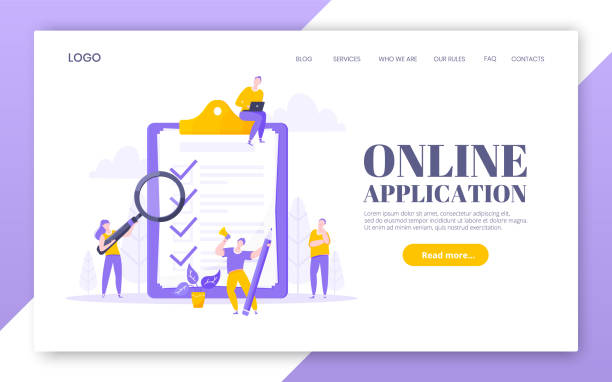
The success of a custom website design is not limited to its beautiful appearance; rather, it depends on a set of key factors that together provide an unparalleled user experience and optimal performance.
One of the most important of these elements is User Experience (UX).
A website with strong UX is easy, understandable, and enjoyable for users.
This means intuitive navigation, logical content layout, and fast loading speeds.
UX designers must carefully analyze user behavior to ensure that the user’s path through the website is seamless and purposeful.
The goal of this analytical phase is to reduce the Bounce Rate and increase the time users spend on the website.
Another element is the User Interface (UI).
UI refers to the visual appearance of the website: colors, fonts, images, icons, and the arrangement of elements.
An attractive and professional UI not only strengthens your brand identity but also encourages users to stay and interact more with the website.
Coordination between UX and UI is crucial for creating a complete and satisfying digital experience.
In addition, Search Engine Optimization (SEO) is one of the main pillars of any website’s success, especially in custom website design.
From the very initial stages of design, the coding structure, content, and even the informational architecture of the website should be such that it is understandable and likable to search engines like Google.
This includes correct use of keywords, website speed optimization, strong internal linking structure, and ensuring full mobile compatibility (Mobile Responsiveness).
Today, a significant portion of internet users access websites via mobile devices, so the responsiveness of the website to different screen sizes is of high importance.
A responsive website automatically adjusts its layout and elements to provide the best experience on any device.
Ignoring any of these elements can mean loss of traffic, reduced conversion rates, and ultimately, project failure.
Therefore, in custom website design, investing in these key elements guarantees return on investment and long-term success in the digital space.
This analytical and comprehensive approach ensures that your website is not only beautiful but also powerful and efficient.
Do you know that customers’ first impression of your company is your website? If not, it’s time to get your professional and impactful corporate website with Rasaweb!
✅ Fully custom and eye-catching design tailored to your brand
✅ Improved user experience and increased customer acquisition
⚡ Get a free consultation!
The Impact of Custom Website Design on Your Business’s Branding and Competitive Position
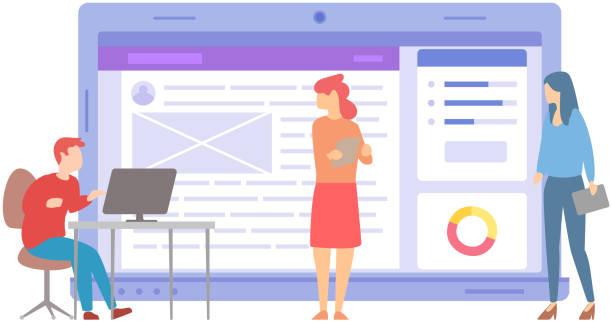
In a market saturated with competitors and information, having a distinct and strong brand identity is a determining factor for success.
Custom website design plays a pivotal role in shaping and strengthening this brand identity.
Unlike websites built with ready-made templates that often lack originality, a custom website allows you to fully reflect your brand’s values, philosophy, and personality in the online space.
Every visual element, from the color palette and typography to the style of images and animations, can be carefully chosen to align with your brand message and make your brand memorable in the minds of your audience.
This visual and content consistency builds trust and credibility among users, which is crucial for converting visitors into loyal customers.
A uniquely designed website sends a clear message to the audience: “This business is serious and invests in providing the best experience for its customers.”
In addition to strengthening brand identity, custom website design can significantly improve your competitive position.
In a competitive market, differentiation is highly important.
When competitors use generic templates, your custom website can set you apart and enable you to offer innovative features and services that your competitors cannot.
This can include complex content management systems, unique interactive tools, or integration with internal business systems that help improve efficiency and customer experience.
These additional and unique capabilities not only attract customers but also convince them that you are an industry leader.
From an analytical perspective, these features can significantly increase your Conversion Rate, as users can easily meet their needs and connect with your brand.
Ultimately, investing in custom website development means building a powerful digital asset that creates added value over time and helps your business remain competitive and even thrive in the long run.
This is a strategic decision that allows your business to shine in the online space and gain a sustainable competitive advantage.
The Role of Advanced Technologies in Shaping Modern Custom Websites

In the fast-paced world of the web, technology plays a vital role in determining the quality, efficiency, and capabilities of a custom website design.
The correct selection of platforms, programming languages, and frameworks can make a significant difference in website performance and ensure its future.
In back-end development, languages like Python (with frameworks such as Django and Flask), PHP (with Laravel and Symfony), and Node.js (with Express.js) are popular choices.
Each of these languages and frameworks has its own advantages and disadvantages, and their selection depends on the project scale, performance requirements, and development team preferences.
For example, Python, due to its high readability and rich ecosystem, is suitable for complex and data-driven projects, while PHP continues to be recognized as a powerful language for dynamic and scalable websites.
Node.js also enables Full-Stack development with a single language (JavaScript), which can accelerate the development process.
This specialized information is very important for understanding the foundation of a website.
In the front-end section, responsible for the user’s visual experience, HTML, CSS, and JavaScript form the main pillars.
JavaScript frameworks such as React, Angular, and Vue.js have revolutionized the development of dynamic and interactive user interfaces.
These frameworks allow developers to create reusable components, simplify application state management, and provide a smooth and responsive user experience.
The choice of these frameworks depends on the complexity of the user interface, the need for high performance, and the development team’s experience.
Additionally, the use of Database Management Systems (DBMS) such as MySQL, PostgreSQL, MongoDB, or Firebase, is crucial for storing and retrieving website information.
Each database is optimized for a specific type of data and access patterns, and its selection is based on your website’s needs (e.g., whether data is structured or unstructured).
Given the rapid pace of technological advancement, custom website design teams must constantly stay updated and leverage the latest tools and methods to create websites that are not only efficient today but also scalable and secure for the future.
This ensures that your website is not just a marketing tool but also a leading technological platform.
This news and analytical approach keeps you informed about the latest developments.
Measuring Success in Custom Website Design: Key Metrics and Data Analysis
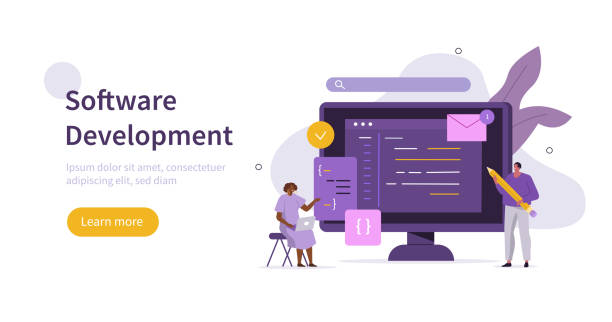
Launching a custom website design is just the beginning.
To ensure that your website achieves your business goals, it is essential to continuously measure and analyze its performance.
This section provides guidance for understanding important metrics.
Key Performance Indicators (KPIs) exist that help you evaluate your website’s effectiveness.
One of the most important is the Conversion Rate, which indicates the percentage of visitors who perform a desired action (such as a purchase, form submission, or registration).
Increasing the conversion rate means greater website efficiency in achieving goals.
Other metrics include website traffic (number of visitors), Bounce Rate (the percentage of visitors who view only one page and leave the website), average time on site, and the number of pages viewed per session.
These metrics provide deep insight into user behavior and how they interact with the website.
To collect and analyze this data, tools like Google Analytics and Google Search Console are essential.
Google Analytics provides comprehensive information about website visitors, traffic sources, popular content, and user behavior, while Google Search Console helps you monitor your website’s performance in Google search results and identify and fix SEO issues.
Using these tools, you can identify patterns, discover weaknesses, and make data-driven decisions to improve your website.
For example, if the bounce rate on a specific page is high, you can improve that page’s content or design.
If traffic from a particular channel decreases, you can revisit your marketing strategy for that channel.
Detailed data analysis allows you to maximize your Return on Investment (ROI) from custom website design.
This is an ongoing process; websites must be continuously reviewed and optimized to keep pace with changing market and user needs.
This analytical approach helps you make the most of your investment and ensures the long-term success of your business.
| Key Metric | Description | Importance for Custom Website Design |
|---|---|---|
| Conversion Rate | The percentage of users who complete a target action (purchase, registration). | Indicates the website’s efficiency in achieving business goals. |
| Website Traffic (Sessions) | The total number of visits to the website. | A measure of the website’s reach and popularity. |
| Bounce Rate | The percentage of users who leave the website after viewing only one page. | Indicates content quality and user experience (lower is better). |
| Average Time on Site | The average time users spend on the website. | Indicates the content’s attractiveness and relevance to the user. |
| Pages per Session | The average number of pages users view per visit. | Indicates the depth of interaction and the quality of website navigation. |
| Page Load Speed | The time required for a web page to fully load. | Direct impact on user experience and SEO ranking. |
Common Challenges and Obstacles in Custom Website Design Projects and Solutions to Overcome Them

Every custom website design project, no matter how carefully planned, may encounter challenges and obstacles.
Identifying these challenges in advance and being prepared to tackle them can make the difference between a project’s success and failure.
One of the most common obstacles is “lack of clarity in project scope definition” or “Scope Creep.”
This occurs when initial project requirements are not clearly defined or new requests are made by the client during the development process that are outside the initial agreement.
This can lead to increased costs, delivery delays, and dissatisfaction from both parties.
The solution to this challenge is to hold precise needs discovery meetings at the beginning of the project, prepare a clear and comprehensive Requirements Document, and implement strict Change Management.
Any new request should be evaluated, and its impact on time and budget should be specified.
Another challenge is “communication problems” between the client and the design and development team.
Misunderstandings regarding features, design, or expectations can lead to undesirable outcomes.
To overcome this, continuous and transparent communication is vital.
Using project management tools, regular meetings, and providing constructive feedback at every stage of the project can help prevent these issues.
Also, “budget and time constraints” are persistent challenges.
Custom website design projects can be costly and time-consuming, especially if complex features are required.
Budget management by prioritizing features, and having a realistic timeline, is key to success.
In some cases, project phasing may be necessary, meaning core features are developed in the first phase, and additional features are added in subsequent phases.
This thought-provoking approach to project management helps you reduce risks.
Finally, “technical problems and bugs” are also inevitable.
A rigorous testing and quality control process, combined with the technical expertise of the development team, is crucial for identifying and resolving these issues before launch.
With a proactive approach and meticulous planning, many of these challenges can be turned into opportunities for improvement and learning, ensuring that your unique website development project is completed to the highest standard.
Do you know that customers’ first impression of your company is your website? Multiply your business credibility with a powerful corporate website from Rasaweb!
✅ Custom and eye-catching design tailored to your brand
✅ Improved user experience and increased customer acquisition
⚡ Get a free consultation!
Post-Launch Support and Maintenance: Ensuring the Stability and Growth of Your Custom Website

The idea that the work is finished once your custom website design is launched is a common misconception.
In fact, the post-launch phase, which includes support and maintenance, is crucial for ensuring the website’s long-term stability, security, and optimal performance.
Websites, like any other software, require regular updates.
These updates include security updates to protect against vulnerabilities and cyberattacks, platform and programming language updates to maintain compatibility and performance, and content updates to keep information fresh and engaging for users.
Neglecting maintenance can lead to reduced website speed, security issues, and even downtime.
This instructional section helps you understand the importance of this topic.
In addition to technical updates, monitoring website performance and promptly resolving potential issues is also very important.
This includes server monitoring to ensure high Uptime, monitoring website performance for loading speed and responsiveness, and tracking any bugs or errors reported by users.
A strong support team can quickly address these issues and minimize disruptions to the user experience.
Also, website maintenance includes continuous SEO optimization.
Search engine algorithms are constantly changing, and website content also needs to be regularly updated to maintain a good ranking in search results.
This includes adding fresh content, optimizing keywords, and improving the internal linking structure.
Finally, as your business grows and market needs change, you may need to add new features or modify existing ones on your custom website design.
These continuous developments ensure that your website remains an efficient and modern tool for achieving your business goals.
Investing in a comprehensive support and maintenance plan is not just an additional cost; it is a strategic investment to preserve your website’s value and performance over time.
The Future of Custom Website Design: Innovations and Emerging Trends

The world of custom website design is constantly evolving, with new innovations continuously changing the web landscape.
Understanding these trends is vital for any business that wants to remain a leader in the online space.
One of the most important future trends is the increased use of Artificial Intelligence (AI) and Machine Learning in web development.
AI can enhance user experience through content personalization, product recommendations, and intelligent chatbots that answer user questions.
Additionally, AI can assist in SEO optimization, data analysis, and even automate certain aspects of the development process.
This news and entertaining aspect adds to the appeal of the topic.
Another trend is a greater focus on Web Accessibility.
With increasing awareness of the needs of people with disabilities, websites must be designed to be accessible and usable for all users, regardless of their abilities.
This includes using semantic code, providing alternative text for images, and ensuring compatibility with assistive technologies like screen readers.
Progressive Web Apps (PWAs) are also gaining increasing popularity.
PWAs are websites that offer a user experience similar to native mobile applications, including offline functionality, push notifications, and fast loading speeds.
This technology allows businesses to provide a better mobile experience to their users without the need to develop a separate native application.
Cybersecurity will also always be a major concern.
With the increasing complexity of cyberattacks, custom website design must be built with a focus on security from start to finish.
This includes using strong security protocols (such as HTTPS), implementing multi-factor authentication, and protecting databases.
Finally, Virtual Reality (VR) and Augmented Reality (AR) also have great potential to revolutionize the web experience, especially in sectors such as e-commerce, education, and entertainment.
Imagine being able to try on products virtually or explore a 3D environment.
These technologies can bring a new level of user interaction and engagement to your website.
Given these growing trends, the future of custom website design is exciting and full of innovative opportunities that can completely transform the digital experience.
This is a comprehensive analysis of web trends and the future.
Frequently Asked Questions
| Question | Answer |
|---|---|
| What is custom website design? | It refers to the process of designing and developing a website built entirely based on the specific needs, goals, and brand identity of a particular business, without using ready-made templates. |
| How does it differ from ready-made websites? | Custom websites offer flexibility, unique functionalities, high optimization, and design perfectly tailored to needs, whereas ready-made sites are more limited and better suited for businesses with standard requirements. |
| What are its main advantages? | It includes high flexibility, scalability, better security, optimal speed and performance, stronger SEO optimization, and the ability to precisely implement business ideas and requirements. |
| When should we opt for custom design? | When you need specific and complex features and functionalities not found in ready-made templates, or when your brand identity requires a unique presentation. |
| Is the cost of custom design higher? | Yes, due to the greater time and expertise required for fully custom design and development, it generally has a higher cost compared to using ready-made templates. |
And Other Advertising Services from Rasaweb Advertising Agency
Smart Advertising Campaign: An effective tool for user engagement by optimizing key pages.
Smart SEO: Revolutionize click-through rates with attractive UI design.
Smart Marketplace: An innovative platform for improving campaign management with intelligent data analysis.
Smart Conversion Rate Optimization: A fast and efficient solution for digital branding, focusing on SEO-driven content strategy.
Smart Google Ads: Professional optimization to improve SEO ranking using Google Ads management.
And over a hundred other services in the field of internet advertising, advertising consultation, and organizational solutions.
Internet Advertising | Advertising Strategy | Advertorial
Resources
What is Custom Website Design?The Importance of Digital Identity in BusinessChoosing the Best Website Design CompanyPros and Cons of Custom Website Design
? To elevate your business in the digital space and reach the peaks of success, experience custom website design and comprehensive digital marketing services with Rasaweb Afarin.
📍 Tehran, Mirdamad Street, next to Bank Markazi, Kazeroun Jonoubi Alley, Ramin Alley, No. 6

